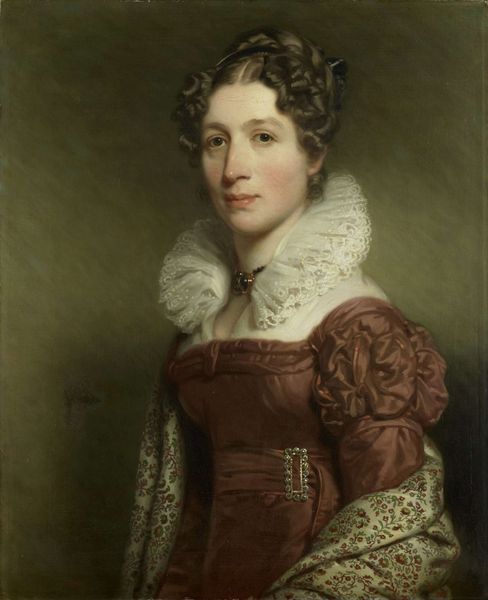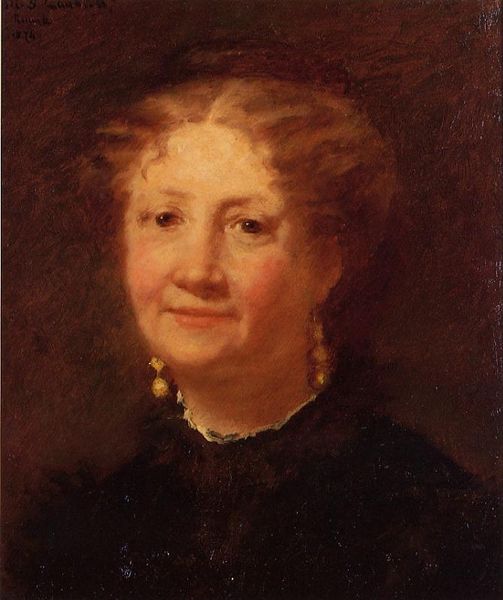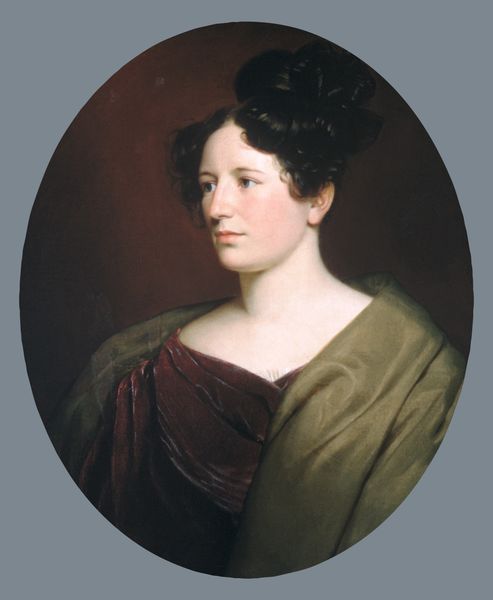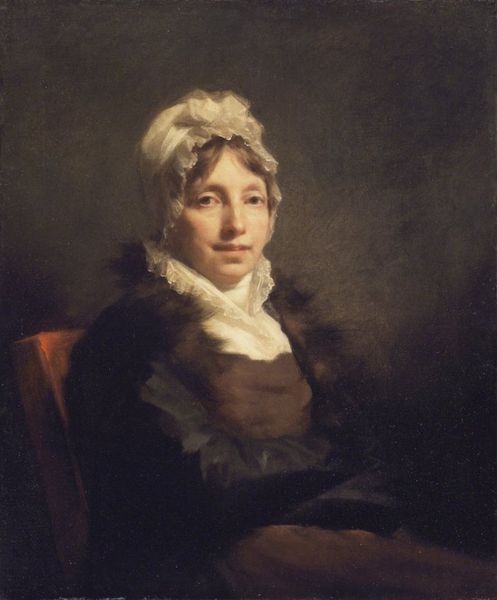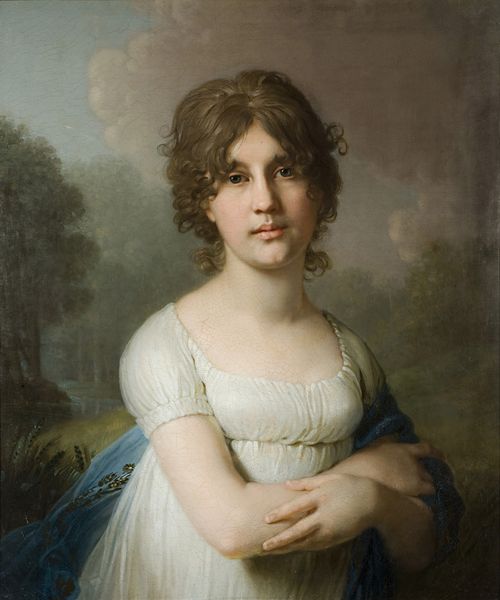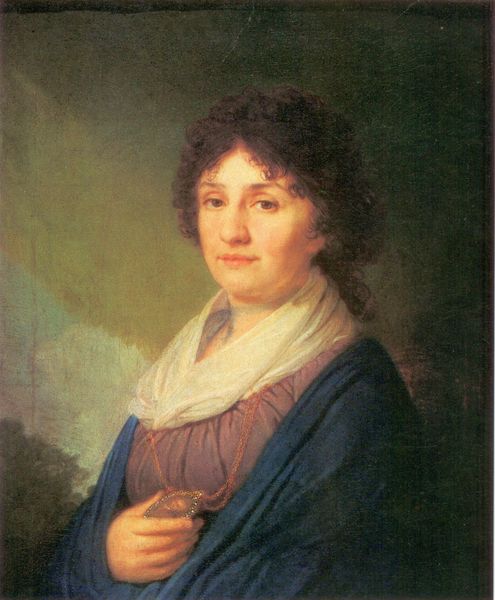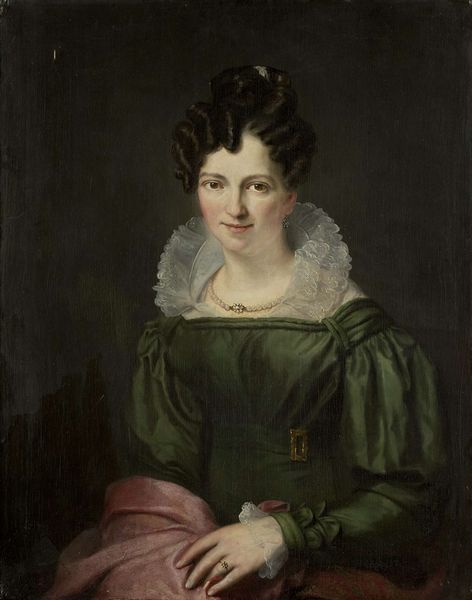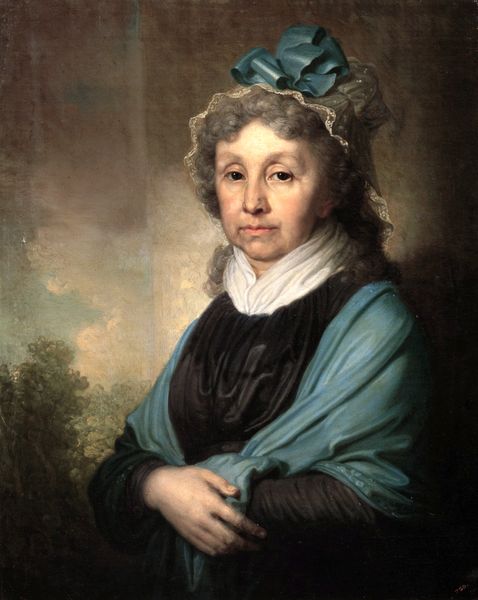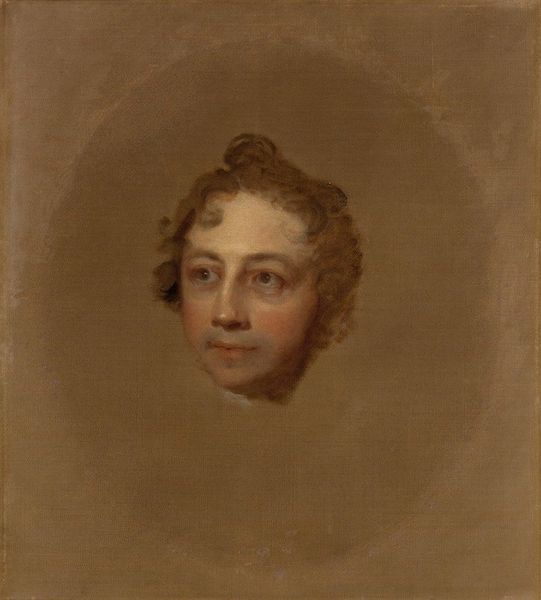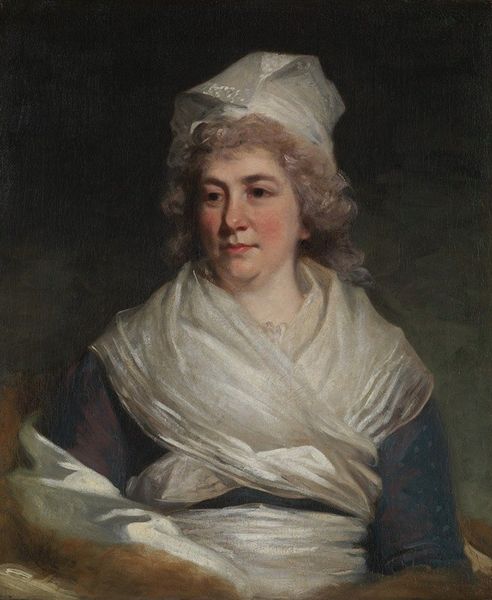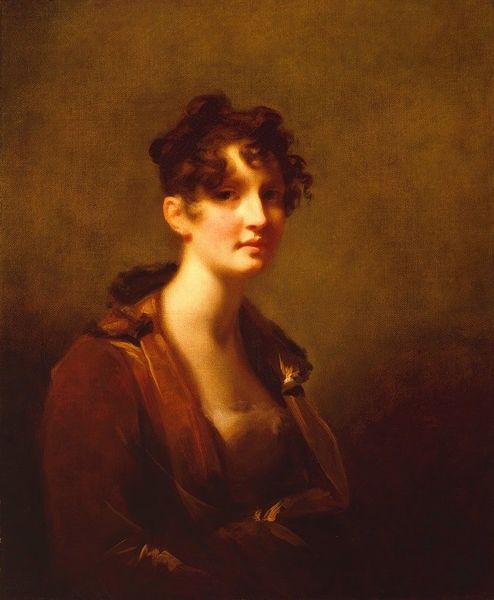
oil-paint
#
portrait
#
oil-paint
#
classical-realism
#
romanticism
#
history-painting
#
academic-art
Copyright: Public domain
Curator: What a strikingly sober portrait, wouldn't you agree? Something about its muted palette creates a somber mood. Editor: Yes, it's rather introspective. We’re looking at Vincenzo Camuccini’s oil painting of "Matilde Malenchini, Italian artist," created around 1815. You can currently find it at the Accademia di San Luca in Rome. The texture looks fascinating. You can almost feel the roughness of the canvas and see each stroke the artist has put on there. Curator: Precisely! Consider the materials—oil paint, canvas stretched and prepared, the labor invested. The brushstrokes may appear classical, but notice how Camuccini allows them to remain visible, reminding us of the act of creation itself. Editor: Interesting, yes, it has that feel of something being created at that specific time. My mind is drawn to her collar. The ruff encircles her face like a halo. It creates an interesting frame for her head, doesn’t it? Almost reminiscent of certain religious paintings from earlier eras, but repurposed to signal intellect and status, not piety. Curator: The fabric, clearly finely woven and starched, indicates wealth and status. Think of the labor involved in producing it—from the cultivation of flax to the skilled hands of the lacemakers. Materially, it anchors her in a world of privilege. Also the artist needed to use specific skills for such details to portray it correctly and catch this kind of emotion through their strokes. Editor: It seems though her slightly melancholic gaze complicates that message of privilege, maybe we shouldn't just only appreciate the status the dress reveals about her but how this all these visual cues work together with her state of mind in the picture. There’s a fragility in her expression, a vulnerability that challenges any straightforward reading of power and status. Curator: Indeed, her humanity shines through despite the trappings of wealth, but what I find most captivating is Camuccini's conscious engagement with his materials, elevating the very process of painting into a subject worthy of consideration. The piece exemplifies academic art, but there is a push to experiment, perhaps to use newer kinds of styles of oil painting, Editor: Well, whether it reflects power dynamics, personal psychology, or simply masterful technique, this piece offers ample food for thought. Curator: Indeed, its layered complexity reveals just how powerful a seemingly straightforward portrait can be when considered through the lens of artistic intent, cultural context, and, of course, material production.
Comments
No comments
Be the first to comment and join the conversation on the ultimate creative platform.

